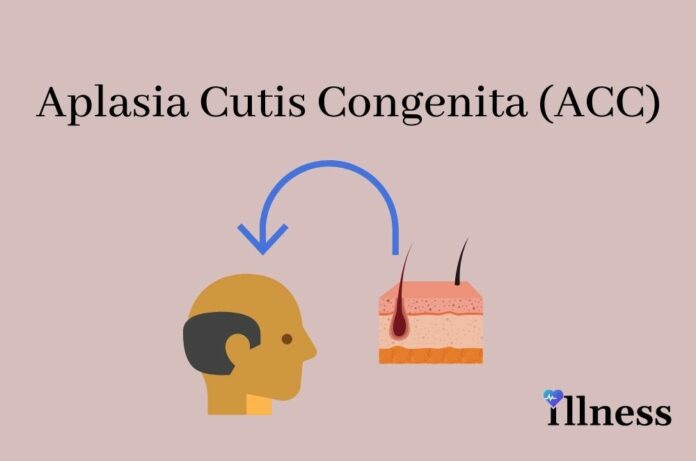Overview
Aplasia Cutis Congenita with Fetus Papyraceus is a condition in which there is congenital (present from birth) absence of skin, with or without the absence of underlying structures such as bone. It most commonly affects the scalp, but any location of the body can be affected. While most people with Aplasia Cutis Congenita with Fetus Papyraceus have no other abnormalities, some people have congenital malformations involving the cardiovascular (heart), gastrointestinal, genitourinary, and central nervous systems. The cause of this condition is unclear and appears to be multifactorial (many different factors appear to play a role); contributing factors may include teratogens, genes, trauma, and compromised blood flow to the skin.
Cause
There is no one cause for all cases of Aplasia Cutis Congenita with Fetus Papyraceus with Fetus Papyraceus. The condition is thought to be multifactorial, which means that several factors likely interact to cause the condition. Factors that may contribute include genetic factors; teratogens (exposures during pregnancy that can harm a developing fetus) such as methimazole, carbimazole, misoprostol, and valproic acid; compromised vasculature to the skin; and trauma. Some cases may represent an incomplete or unusual form of a neural tube defect. Familial cases of Aplasia Cutis Congenita with Fetus Papyraceus have been reported. Cases that appear to be genetic may be inherited in an autosomal dominant or autosomal recessive manner.
Symptoms
The signs and symptoms of Aplasia Cutis Congenita with Fetus Papyraceus with Fetus Papyraceus vary from one individual to another. While the presence of the ACC lesions at birth is the key symptom of the condition, there may be several other congenital abnormalities.
• A vast majority of individuals have a large lesion on the scalp with hair loss
• The skin lesions may be on the surface (superficial) or involving several layers of skin tissue (deep)
• Presence of extensive skin lesions on the body and limbs of the child; the presentations are often linear and symmetric
• The areas of skin involvement include the trunk, buttocks, and thighs
• Other developmental abnormalities/malformations may be noted in the surviving child
Treatment
There is no standard course of treatment for ACC. Treatment usually involves the management of symptoms and seizures if they occur. Associated difficulties are much more manageable with early recognition and therapy, especially therapies focusing on left/right coordination. Early diagnosis and interventions are currently the best treatments to improve social and developmental outcomes.
Source
https://rarediseases.info.nih.gov/diseases/5835/aplasia-cutis-congenita#



